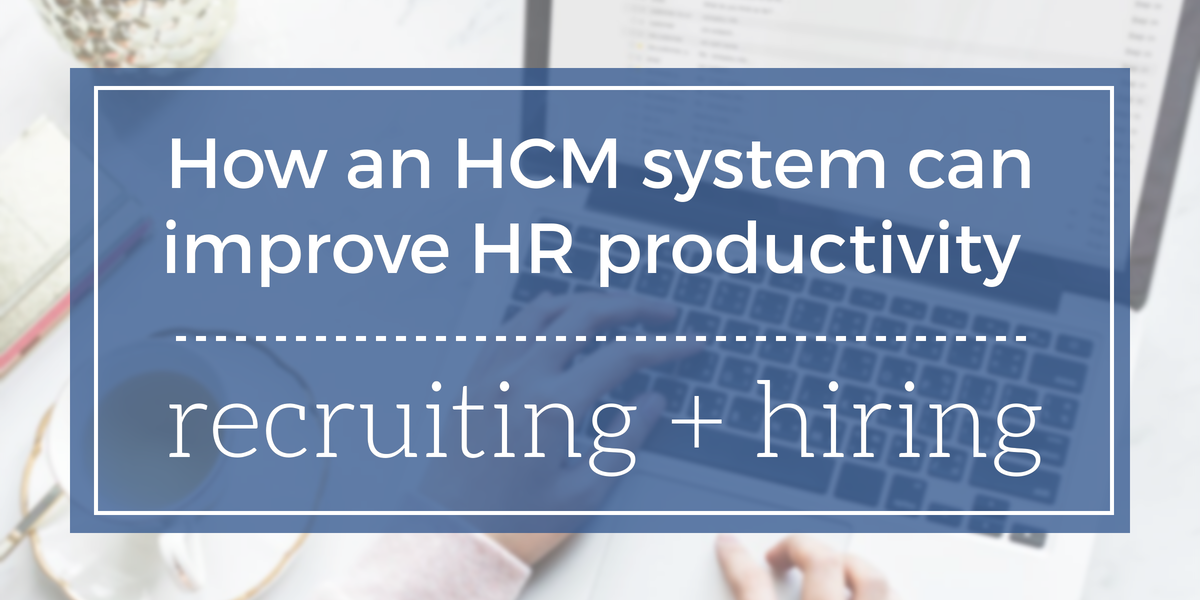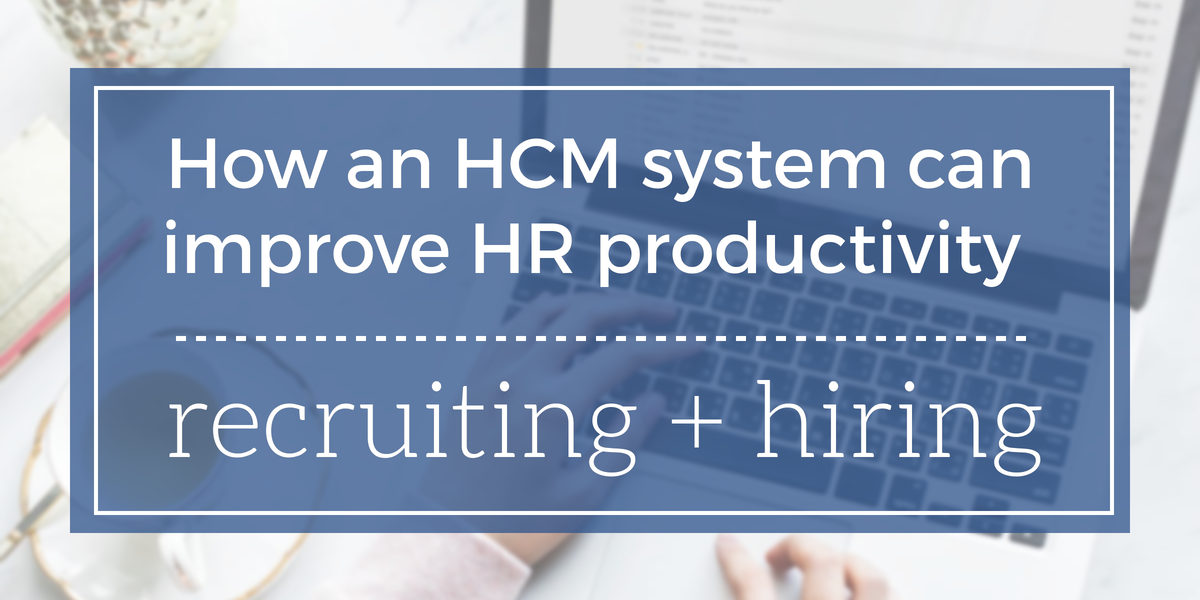
You’ve probably noticed that the modern American workforce is changing. That may be partly due to shifting cultural priorities, technological innovations, and the addition of more contingent workers. But underlying those new factors is a drive to work faster without sacrificing quality. Nowadays, it’s critical to look for creative ways to meet needs while controlling costs and improving productivity.
Because of the relentless pursuit of efficiency, the job of a full HR team often ends up falling onto the shoulders of a single person. With all the varied responsibilities on your plate, it can be easy to lose sight of the most important parts of your job. Without proper management processes, you may spend all your time fixing data inconsistencies and duplicated forms. This kind of work stifles productivity and hinders progress toward strategic goals.
You don’t have time to waste on inefficient ways of working. Because the current labor market favors candidates over employers, HR and hiring managers need to be smart about recruiting and hiring. In a fast-paced, competitive labor market, how can you develop and lead your workforce better?
To start, use a Human Capital Management (HCM) system to get work done with much less time and frustration. Let’s explore how an HCM system improves productivity for each stage in the employee lifecycle, starting with recruiting and hiring.
Recruiting
There’s an art to recruiting; it takes practice to know when you’re looking at high-quality or mediocre candidates. You’re not just looking for the best people and trying to impress them, either; bad recruiting experiences negatively impact a brand’s reputation, even among people that don’t get hired. That means professionalism and efficiency are the name of the game. Managers should work internally to streamline the hiring process so the search for qualified applicants is easy, cost-effective and timely.
Using these tools will make recruiting simple and efficient:
Applicant self-service
Unnecessary interruptions can ruin your focus and divert energy away from your core responsibilities. As an HR manager wearing many hats, shifting tasks to employees does wonders to speed up productivity and reduce inaccuracies. Using a recruitment module allows both employers and applicants to stay on the same page without all the distractions.
Through the system, the self-service tool allows users to update personal information, work history, and resumes. This data pre-populates fields for forms and paperwork, so all files are consistent and accurate without anyone having to triple-check for spelling errors or silly slip-ups. Giving applicants liberty to control their profiles frees your time to focus on company goals and improvement.
Configuring your dashboards
Once you’ve identified a pool of potential new hires, it’s important to take action quickly to guide them from job posting to offer. In a workforce management suite, you can review credentials, access forms, and send emails from one dashboard. Keeping applicants in the loop helps things run smoothly, giving you more time to devote to finding the best fit.
For specialized roles, using configurable dashboards allows managers to adapt the software to meet each individual need. Will employees be working remotely? Do they need specific software to do their job? Whatever the unique circumstances are, customizing your dashboards lets you increase productivity and efficiency.
Accessing applicant repositories
If you aren’t getting enough traction on your new job posting, you may want to look at previous applicants to see if any of them would be a good fit. A periodical review of all previous resumes helps you find missing holes in your workforce. If you’ve told rejected applicants that you’d be in touch about future available positions, this is a great time to deliver on those expectations.
Accessing the applicant repository can also help you find applicants with specific certifications or expertise. Whether you’re searching by diversity metrics or rare skill sets, you may find that the right candidate for your open position has previously applied for another role at your company. This is a great reminder to use good manners when turning down applicants. There are great opportunities for recruiters who keep a steady pipeline of applicants with positive impressions of the company.
Hiring
Finding the right employees for your company may feel like looking for a needle in a haystack. As much as you hope for the best applicant to drop into your inbox, it takes patience and time. Consider people who share experiences and enthusiasm that may serve as a foundation you can work with. As recruiting and hiring become more human-centric, it’s important to approach a direction that is inclusive and diverse while meeting quality standards. With a workforce management system, you can optimize the selection process to make it easier to screen, organize and find resumes.
Here are some ways to get better results in the hiring process:
Screening applicants
Sift through applications based on skill sets or certifications to maximize your potential to hire the right candidate. Save yourself the trouble and penalties caused by false data by using verification services to maintain compliance. The best HCM platforms include background screenings to identify the qualifications of the candidate and protect the organization. Because so much time can be lost correcting errors in paperwork, using tools to help ensure accuracy is key.
Scheduling interviews and other communication
Regular communication makes the hiring process more user-friendly for candidates. Using autoresponder emails—or worse, saying nothing at all— is frustrating for job applicants, and it doesn’t send the right message about your company. But communication doesn’t need to be difficult or time-consuming. Reduce your time to seconds by using personalized email templates. Putting a little bit of effort into creating consistent and timely responses can result in better transparency and a more positive experience in the long run.
Some workforce management systems claim to offer a synchronized experience by adding integrations for certain HR and payroll operations. In reality, these integrations still require multiple systems to work together and can be prone to error. All-in-one platforms offer everything in one system, so your workflows run together, rather than being forced to work together after the fact. Using a powerful, multifaceted workforce system can help your company thrive in the future with an effective and productive workforce.
Read part 2: How an HCM system can improve HR productivity, part two: Onboarding, where we talk about the best onboarding practices to nurture your potential workforce.
Ready to learn how an integrated workforce management system can make you and your team more productive? Talk to an HR specialist about smarter solutions for your organization.

